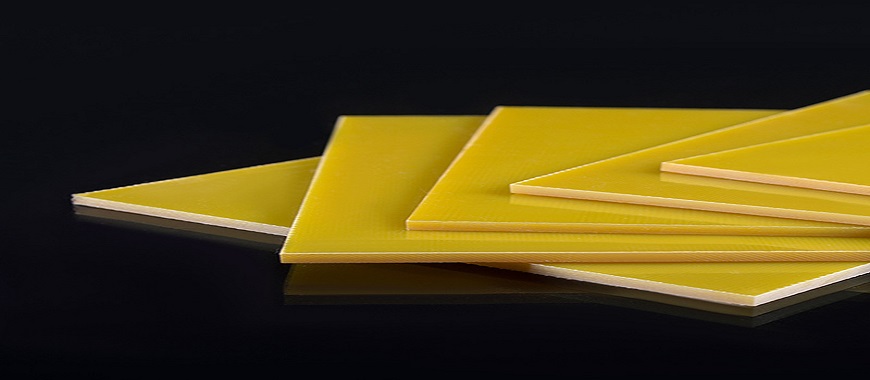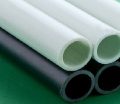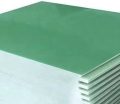
OSB, or oriented strand board, is often used as a substrate in fiberglass roofing systems due to its strength and moisture resistance. The adhesive properties of OSB glues are crucial for ensuring a strong bond between the fiberglass sheets and the OSB surface. Proper surface preparation, including cleaning and possibly priming the OSB, can enhance this interaction. The right adhesive selection not only improves adhesion but also contributes to the overall durability of the roofing system. Therefore, exploring fiberglass sheets interaction with OSB glues helps in optimizing construction methods for long-lasting results.
Overview of Fiberglass Sheets Interaction with OSB Glues
Fiberglass sheets are commonly used in various construction and manufacturing applications due to their strength, durability, and resistance to moisture. Oriented strand board (OSB) is a widely utilized engineered wood product made from strands of wood compressed and bonded together with adhesives. Understanding the fiberglass sheets interaction with OSB glues is essential for ensuring a strong bond in various applications, such as roofing, flooring, and wall systems.
The Importance of Adhesive Selection in Fiberglass Sheets Interaction with OSB Glues
Selecting the appropriate adhesive is crucial when bonding fiberglass sheets to OSB. Different adhesives possess varying properties, affecting their compatibility with both fiberglass and OSB. Commonly used adhesives include polyurethane, epoxy, and PVA (polyvinyl acetate). Each of these adhesives offers unique benefits and limitations. For instance, polyurethane adhesives are known for their flexibility and water resistance, making them suitable for outdoor applications. In contrast, epoxy adhesives provide a stronger bond and higher resistance to chemicals, which can be beneficial in specific industrial contexts.
Properties of OSB Glues in Fiberglass Sheets Interaction with OSB Glues
OSB glues are designed to create a strong bond between wood strands while providing durability and moisture resistance. These adhesives typically contain a blend of phenolic, isocyanate, or melamine resins. The choice of resin influences the glue’s curing time, strength, and performance in different environmental conditions. Understanding the properties of these glues is essential to ensure compatibility with fiberglass sheets. When fiberglass sheets interaction with OSB glues is considered, factors such as curing time and temperature resistance come into play.
Preparing Fiberglass Sheets for Effective Interaction with OSB Glues
Proper preparation of fiberglass sheets is vital to achieving an effective bond with OSB glues. The surface of the fiberglass sheet should be clean, free of dust, oils, or other contaminants that could hinder adhesion. Lightly sanding the surface can enhance the bond by creating a textured profile that increases the adhesive’s grip. Additionally, applying a primer or surface treatment specifically designed for fiberglass can improve adhesion with OSB glues. These steps are critical in ensuring that the fiberglass sheets interaction with OSB glues results in a long-lasting bond.
Environmental Considerations for Fiberglass Sheets Interaction with OSB Glues
When bonding fiberglass sheets to OSB, environmental factors can significantly influence the adhesive performance. Temperature and humidity levels can affect the curing process and the overall strength of the bond. Most adhesives have recommended temperature ranges for optimal curing. For instance, high humidity can lead to slower curing times and may require longer periods before the bond reaches its full strength. It is essential to monitor environmental conditions and adjust adhesive application methods accordingly to ensure successful fiberglass sheets interaction with OSB glues.
Bonding Techniques for Fiberglass Sheets Interaction with OSB Glues
Different bonding techniques can be employed when applying fiberglass sheets to OSB. One effective method is the use of a roller or brush to apply adhesive evenly across the surface of the OSB. This ensures complete coverage and prevents air pockets, which can weaken the bond. Another technique involves using clamps or weights to maintain pressure on the joint while the adhesive cures. This pressure is essential for achieving a strong bond, especially in applications where the fiberglass sheets may be subjected to stress or movement.
Curing Time and Conditions Affecting Fiberglass Sheets Interaction with OSB Glues
Curing time is an essential factor in the bonding process. Depending on the type of adhesive used, curing times can range from a few hours to several days. It is crucial to allow the adhesive to cure fully before subjecting the bonded materials to stress. Monitoring the curing conditions, such as temperature and humidity, can help ensure that the adhesive sets properly. If fiberglass sheets interaction with OSB glues occurs under unfavorable conditions, it may lead to a weak bond that compromises the integrity of the overall structure.
Testing the Bond Strength in Fiberglass Sheets Interaction with OSB Glues
Once the bonding process is complete, testing the bond strength is essential to ensure the effectiveness of the fiberglass sheets interaction with OSB glues. Various methods can be employed to assess the bond, including tensile strength tests or shear tests. These tests help determine if the adhesive has performed adequately and if the bond can withstand the expected loads and stresses. If the bond strength is insufficient, reevaluating the adhesive choice and application process may be necessary to achieve better results.
Maintenance of Bonded Structures in Fiberglass Sheets Interaction with OSB Glues
After successfully bonding fiberglass sheets to OSB, maintaining the integrity of the bond is critical for long-term performance. Regular inspections should be conducted to identify any signs of delamination or degradation in the adhesive. Environmental factors such as moisture exposure or extreme temperatures can impact the longevity of the bond. Implementing protective measures, such as sealing the edges of the fiberglass sheets or applying weather-resistant coatings, can enhance the durability of the bonded structure and ensure its continued performance.
Innovations in Adhesive Technologies for Fiberglass Sheets Interaction with OSB Glues
Recent advancements in adhesive technologies have led to the development of specialized adhesives designed for improved performance when bonding fiberglass sheets to OSB. These innovations include adhesives that offer enhanced flexibility, faster curing times, and increased resistance to environmental factors. Exploring these new adhesive options can provide better solutions for specific applications and improve the overall effectiveness of fiberglass sheets interaction with OSB glues.
Fiberglass Sheets Interaction with OSB Glues
The interaction between fiberglass sheets and OSB glues is an essential aspect of modern construction and manufacturing processes. Understanding how these materials work together can lead to enhanced structural integrity and improved performance in various applications. This exploration will delve into the properties of fiberglass sheets and OSB, the types of glues used, and the benefits of their interaction.
Properties of Fiberglass Sheets and Their Interaction with OSB Glues
Fiberglass sheets are composite materials made from fine glass fibers and resin, known for their durability, lightweight nature, and resistance to moisture and chemicals. These properties make fiberglass sheets highly suitable for various applications, including insulation, roofing, and structural components. Their non-porous surface can impact how they bond with adhesives, necessitating a proper understanding of the fiberglass sheets interaction with OSB glues.
Characteristics of OSB and Its Interaction with Fiberglass Sheets
Oriented strand board (OSB) is an engineered wood product made from strands of wood that are bonded together with adhesives. OSB offers excellent structural performance and is widely used in construction for sheathing, flooring, and roofing. The interaction of fiberglass sheets with OSB glues is crucial, as it can affect the overall strength and durability of the composite material.
Types of Glues for Fiberglass Sheets Interaction with OSB
Various adhesives are suitable for bonding OSB, including polyurethane, phenolic, and epoxy glues. Each type has distinct properties that contribute to the performance of the bond. Polyurethane adhesives, for example, provide excellent moisture resistance, making them ideal for exterior applications where fiberglass sheets might be used in conjunction with OSB. Understanding the specific properties of these glues helps to optimize the fiberglass sheets interaction with OSB glues for better adhesion and durability.
Essential Tips on How to Fish Wire with Fiberglass Rods
Adhesion Mechanisms in Fiberglass Sheets Interaction with OSB Glues
The adhesion between fiberglass sheets and OSB is influenced by several mechanisms, including mechanical interlocking and chemical bonding. Mechanical interlocking occurs when the adhesive penetrates the surface irregularities of the materials, creating a strong bond. Chemical bonding involves the formation of molecular connections between the glue and the surfaces of the fiberglass and OSB, enhancing the overall strength of the bond. A thorough understanding of these mechanisms is essential for selecting the right adhesive for optimal fiberglass sheets interaction with OSB glues.
Surface Preparation for Effective Fiberglass Sheets Interaction with OSB Glues
Proper surface preparation is critical for maximizing the effectiveness of adhesives when bonding fiberglass sheets to OSB. Cleaning the surfaces to remove dust, oils, and other contaminants is essential. Additionally, lightly sanding the surface of the fiberglass sheet can improve mechanical interlocking, enhancing the bond strength. This preparatory step significantly impacts the overall performance of the adhesive and the durability of the fiberglass sheets interaction with OSB glues.
Environmental Considerations Affecting Fiberglass Sheets Interaction with OSB Glues
The environmental conditions in which fiberglass sheets and OSB are used can significantly affect the interaction of their glues. High humidity, temperature fluctuations, and exposure to chemicals can all compromise the bond between the materials. Choosing adhesives that are specifically formulated for the intended environment can help mitigate these risks. Understanding the environmental factors that influence the fiberglass sheets interaction with OSB glues can lead to more durable applications.
Curing Times and Conditions for Fiberglass Sheets Interaction with OSB Glues
Curing time is an important aspect of the adhesive process. Different adhesives have varying curing times, which can impact the overall efficiency of the bonding process. Understanding the recommended curing conditions—such as temperature and humidity—ensures that the adhesive reaches its full strength before the composite material is subjected to stress. This consideration is vital for achieving a successful fiberglass sheets interaction with OSB glues.
Testing Bond Strength in Fiberglass Sheets Interaction with OSB Glues
To ensure the effectiveness of the bond between fiberglass sheets and OSB, conducting bond strength tests is advisable. These tests evaluate the performance of the adhesive under various conditions and can help identify any potential issues in the bonding process. Regular testing can inform adjustments to materials or procedures, enhancing the overall effectiveness of the fiberglass sheets interaction with OSB glues.
Tips on How to Remove Gummy Tape from Fiberglass Rod
Long-Term Performance of Fiberglass Sheets Interaction with OSB Glues
The long-term performance of fiberglass sheets bonded to OSB is a key consideration in many applications. Factors such as moisture exposure, temperature changes, and mechanical stress can impact the durability of the bond. Understanding these factors and selecting the appropriate adhesives can enhance the longevity and reliability of the fiberglass sheets interaction with OSB glues, ultimately leading to better performance in construction and manufacturing.
Innovations in Adhesive Technology for Fiberglass Sheets Interaction with OSB Glues
Recent advancements in adhesive technology have led to the development of new formulations that enhance the bond between fiberglass sheets and OSB. Innovations in environmentally friendly adhesives, for instance, are gaining popularity due to their lower impact on the environment while maintaining strong performance. Exploring these advancements can provide valuable insights into improving fiberglass sheets interaction with OSB glues and optimizing their applications.
Applications of Fiberglass Sheets Interaction with OSB Glues in Construction
The combination of fiberglass sheets and OSB is utilized in a variety of applications within construction and manufacturing. In building structures, the fiberglass sheets can provide enhanced insulation and durability when bonded to OSB sheathing. In manufacturing, these materials can be used to create lightweight yet strong components for various products. Understanding the fiberglass sheets interaction with OSB glues can help optimize these applications and improve overall performance.
Why Are Fiberglass Rods Shorter Than Other Fishing Rods
FAQs about Fiberglass Sheets Interaction with OSB Glues
Yes, you can fiberglass over oriented strand board (OSB), but there are important considerations to keep in mind. OSB is a versatile building material made from strands of wood that are bonded together with adhesive, creating a strong and stable surface. When fiberglassing over OSB, it’s essential to prepare the surface properly. This includes cleaning the OSB to remove any dust, dirt, or contaminants that could affect adhesion. It’s also recommended to apply a sealant or primer to the OSB before laying down the fiberglass. This helps to protect the OSB from moisture damage and enhances the bonding of the fiberglass resin. Additionally, ensure that you use a high-quality fiberglass resin that is compatible with the OSB material. By following these steps, you can achieve a strong and durable fiberglass surface over OSB.
OSB is glued together using a combination of synthetic adhesives, primarily phenol-formaldehyde, or isocyanate-based adhesives. These adhesives are designed to create a strong bond between the wood strands, ensuring the structural integrity of the board. The adhesive is mixed with the wood strands, which are then compressed and heated to form sheets of OSB. This process not only enhances the mechanical properties of the board but also contributes to its resistance to moisture and other environmental factors. OSB is commonly used in construction for walls, roofs, and floors due to its strength and cost-effectiveness. Understanding the composition of OSB and its adhesive bonding is crucial for any projects that involve applying materials like fiberglass, as it influences the overall durability and performance of the final product.
OSB is bonded with adhesives that are specifically formulated to provide strength and durability. The primary bonding agents used in OSB production are phenol-formaldehyde and isocyanate adhesives. These adhesives are chosen for their excellent bonding capabilities, moisture resistance, and ability to withstand varying environmental conditions. During the manufacturing process, the wood strands are coated with the adhesive before being layered and compressed under high heat and pressure. This creates a strong bond that is critical for the performance of OSB in construction applications. Additionally, some OSB products may include additives that enhance specific properties, such as fire resistance or improved moisture control. When considering the use of fiberglass over OSB, it’s important to account for the bonding agents used, as they can affect adhesion and the overall longevity of the fiberglass application.

As the editor of GangLong Fiberglass, I have years of experience and in-depth research, focusing on cable tray products, fiberglass solutions, and grille systems. I incorporate years of industry insights and practical experience into every content, committed to promoting the progress of the industry. At GangLong Fiberglass, my commitment is reflected in every product, from innovative cable trays to durable fiberglass solutions and sturdy grille systems. As an authoritative voice in the industry, my goal is to provide valuable information to professionals and businesses and promote forward-looking solutions.


